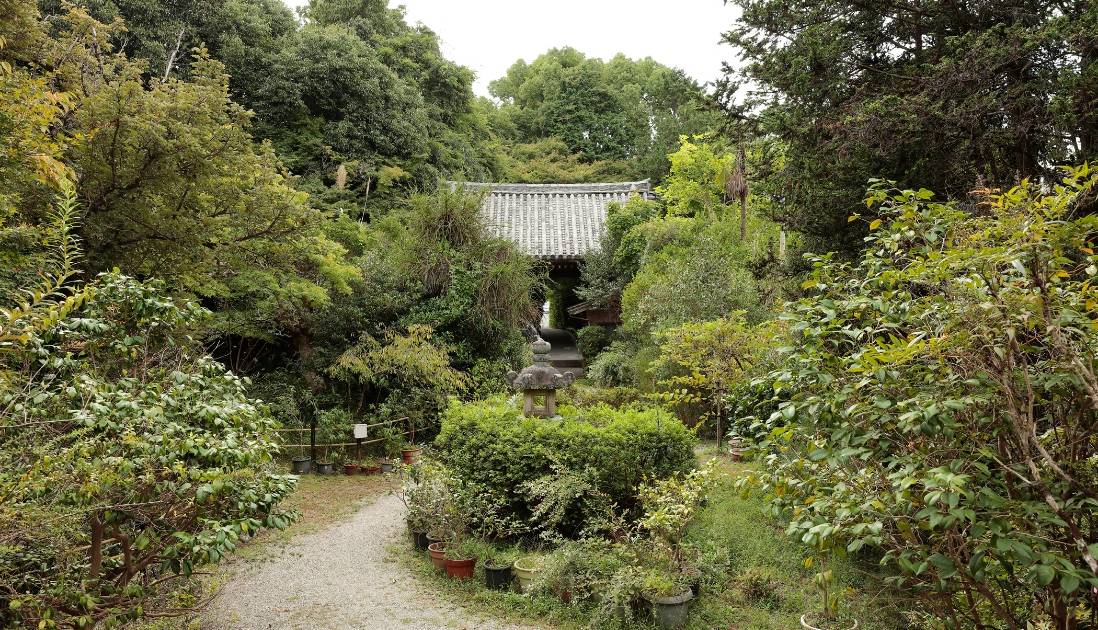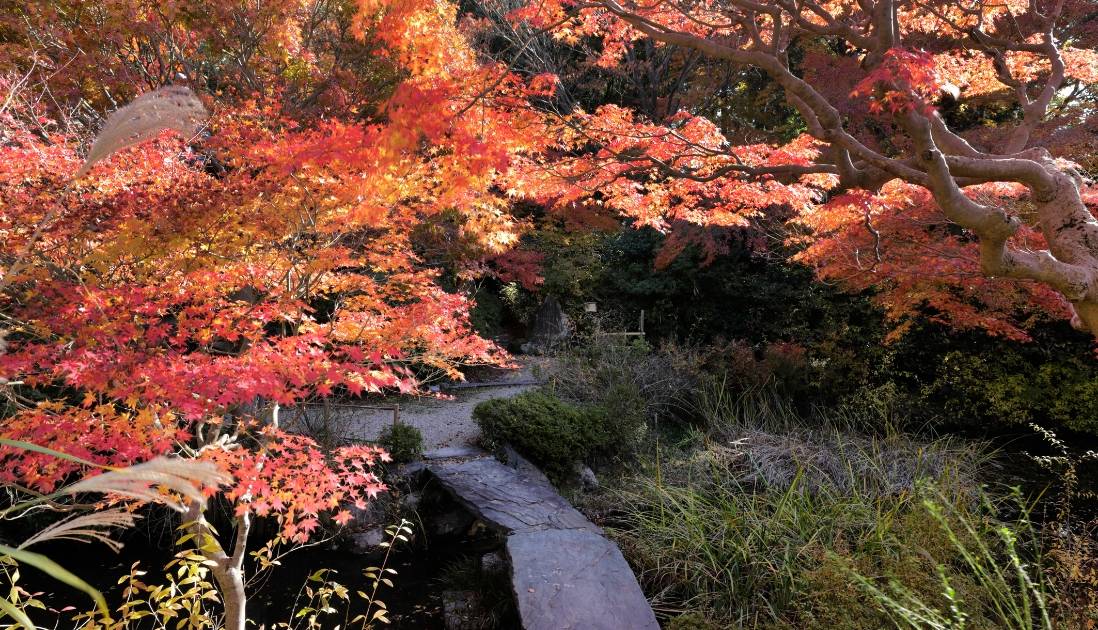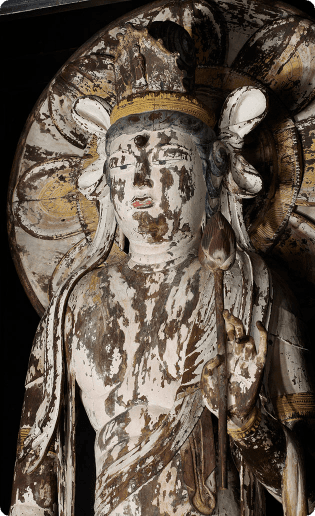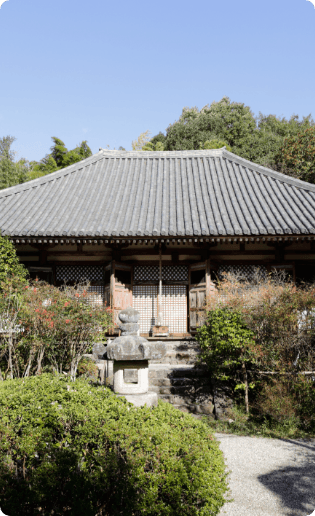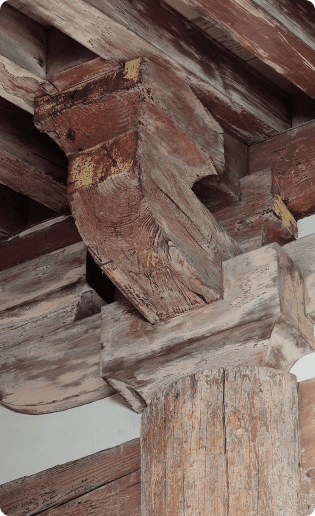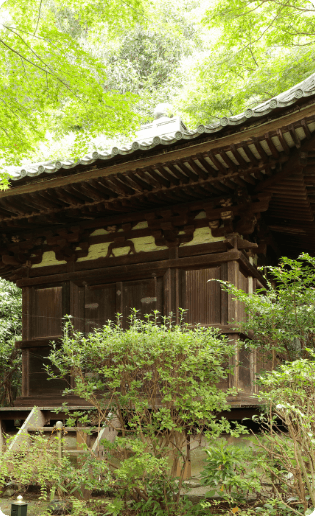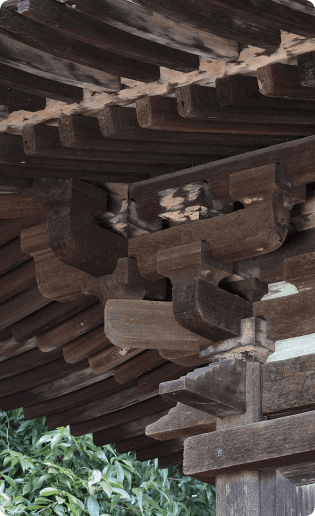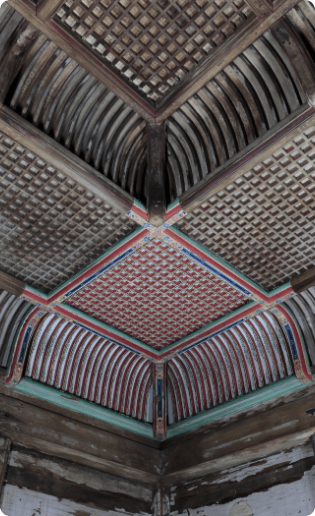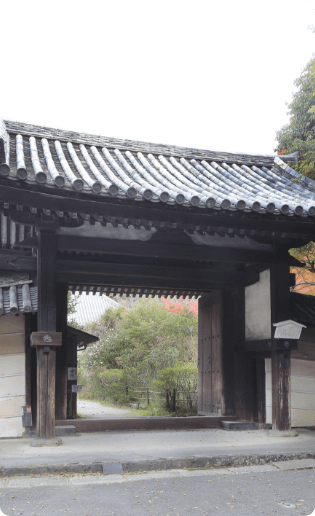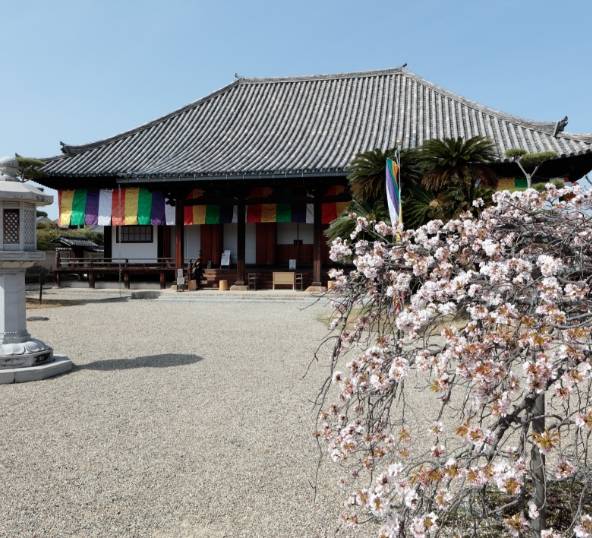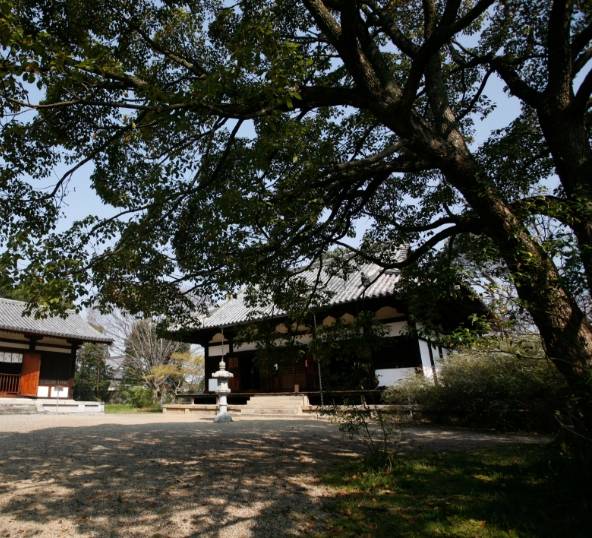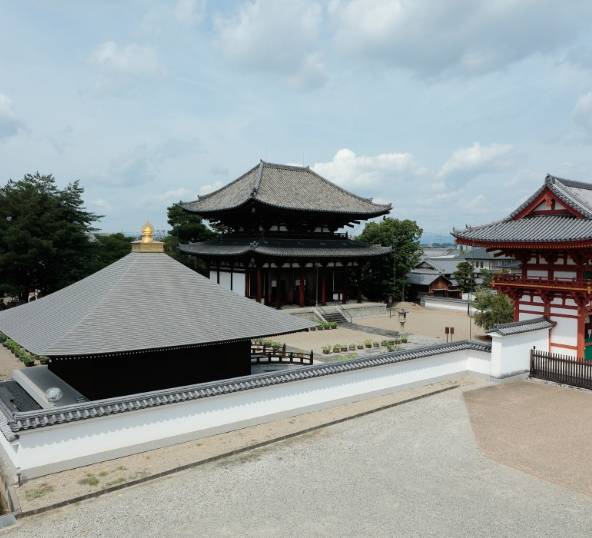Futaiji
不退寺
阿保山の 桜の花は 今日もかも 散り乱るらむ 見る人無しに
Futaiji Temple was founded in 847 by Ariwara no Narihira (825–880), an aristocrat and renowned author of romantic poetry. Narihira himself is said to have carved the temple’s wooden statue of Kannon, the bodhisattva of compassion. In recognition of the temple’s close association with the ninth-century poet, Futaiji is also referred to as Narihira-dera, or “Narihira Temple.” Unlike the sprawling compounds of Nara’s best-known temples, Futaiji’s compact, greenery-filled grounds are crossed by narrow footpaths.
The temple occupies a plot of land that was previously the residence of Emperor Heizei (773–824), whose brief reign lasted from 806 to 809. A sudden illness forced Heizei to abdicate the throne to his younger brother and move from Kyoto to Nara. The following year, Heizei tried and failed to reclaim his position. He then retreated to Nara, where he built a thatched-roof villa in which to spend the remainder of his life.
That land was passed down to Heizei’s son, Prince Abo (792–842), and then to his grandson, Ariwara no Narihira. In 847, Narihira took his grandfather’s residence and converted it, creating a place of Buddhist learning as a memorial to his father. The facility he founded would later become Futaiji Temple.
Narihira is one of the most notable figures of the ninth century, admired for his waka poetry, his reputedly handsome and refined appearance, and his many romantic escapades. He is associated with The Tales of Ise, a famous collection of waka poems and narratives that form a fictional account of Narihira’s life. The poems themselves are attributed to Narihira, but later writers organized them and added their own imagined context.
Today, the temple is known for the 500 or so varieties of flowers and other plants that grow among its buildings and around its pond. It is especially popular in autumn, when the grounds are enfolded by red-tinged maple boughs, and in spring, when the blooms of the yellow flag irises (kishōbu) that ring the pond are reflected in the water.
National Treasures and Important Cultural Properties
Hign
Important Cultural Property Statue of Kannon Main Hall (Hon-do)
Futaiji Temple has multiple wooden statues of Buddhist deities that date to the Heian period (794–1185). The temple’s principal object of veneration is its statue of Kannon, the bodhisattva of compassion. According to legend, the 1.9-meter katsura wood statue was carved by poet and aristocrat Ariwara no Narihira (825–880), the founder of Futaiji, as a representation of his ideal woman. Until the Meiji era (1868–1912), the statue was kept hidden. According to the Washūji-shaki, a record from the late 1600s, the statue was seen only by the chief priest, who was allowed to glimpse it just once during his tenure.
Although legend indicates the statue is a ninth-century creation, elements of the statue’s design suggest it was carved a century later. These elements include the figure’s large topknot, flowing locks, and the sharply ridged folds of the robe. The broad ribbons on either side of its crown are another notable design element. While much of the paint has now flaked off, revealing the wood beneath, the statue was originally painted with a white base and brightly colored floral designs. The statue underwent extensive conservation work in 2022 to stabilize its peeling pigments and address discoloration at its joints.
Important Cultural Property Five Myō-ō statues Main Hall (Hon-do)
Futaiji’s main hall also houses five statues of the Five Wisdom Kings, or Myō-ō. Unlike the peaceful, placid expressions of other Buddhist statuary, the wrathful faces of these deities express their fury at the worldly delusions that lead people away from the path of Buddhism. Each statue is made from multiple pieces of hinoki cypress wood. The five deities depicted are Gundari Myō-ō, Gōzanze Myō-ō, Fudō Myō-ō, Kongōyasha Myō-ō, and Daiitoku Myō-ō.
These statues are thought to have been carved between the 900s and 1100s, but the inlaid crystal eyes of the Fudō Myō-ō statue (the frontmost statue on the right) were added later, during the Kamakura period (1185–1333).
The five Myō-ō statues were once kept in their own individual hall (called kondō) before being consolidated in the main hall. Of the five statues, only Fudō Myō-ō sits atop a flat plinth with a traditional flaming mandorla. It is thought that the other four statues were placed atop boulder-shaped pedestals during repairs in 1914.
-

Acala, one of the five great Myo-o statues
Within the Temple Precincts
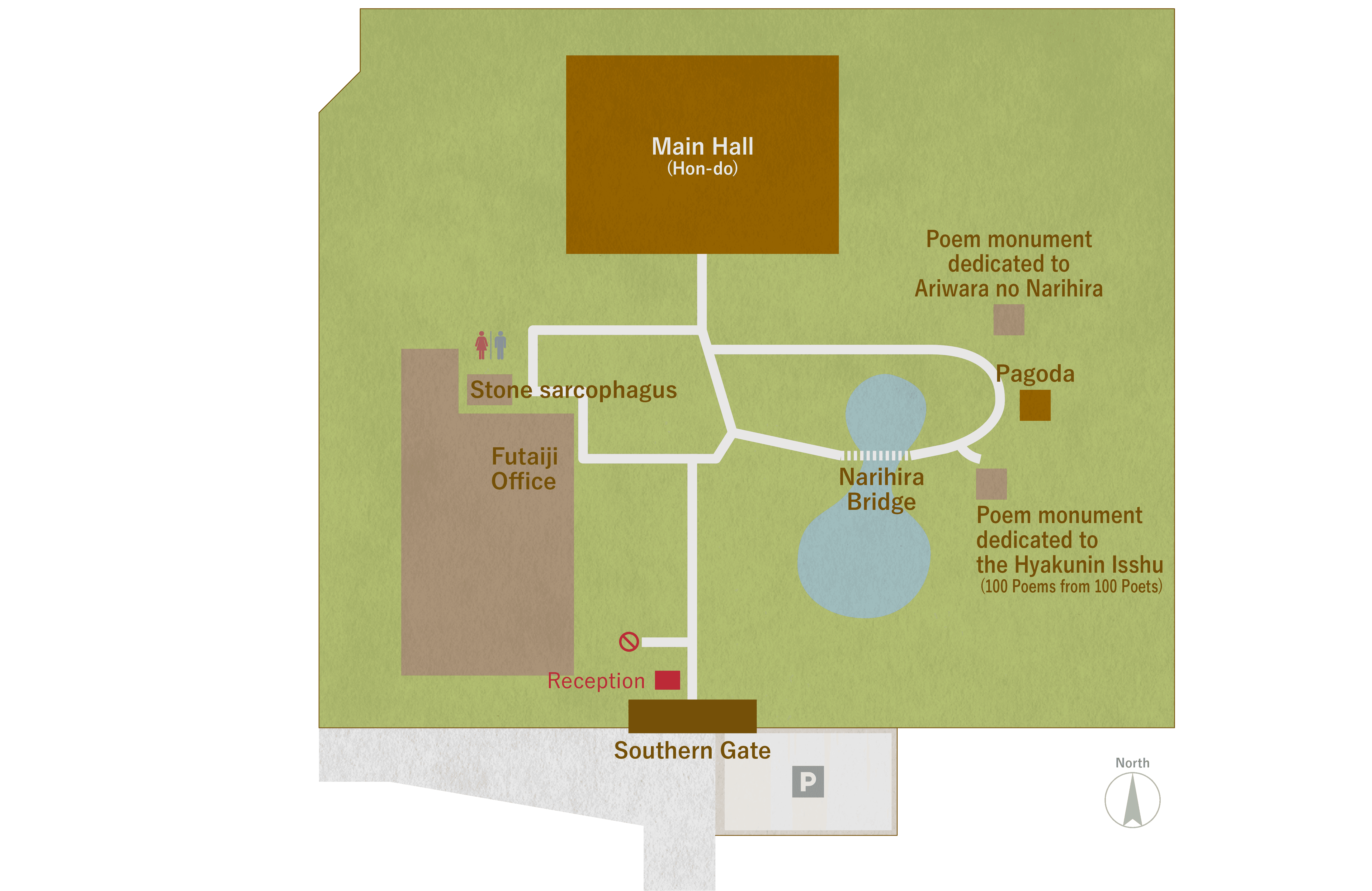
Scroll

Keywords to Help Understanding of the Temple
Keywords
Narihira Kannon
Ariwara no Narihira, a poet from the Heian period, is said to have carved this image of Kannon while imagining his ideal woman. As a result, it has become affectionately known as Narihira Kannon. In recent years, due to the ribbons hanging from the sides of the crown, it has also been nicknamed the 'Ribbon Kannon.' In 2022, after completing restoration work, the statue's beautiful, white skin was further polished and enhanced.
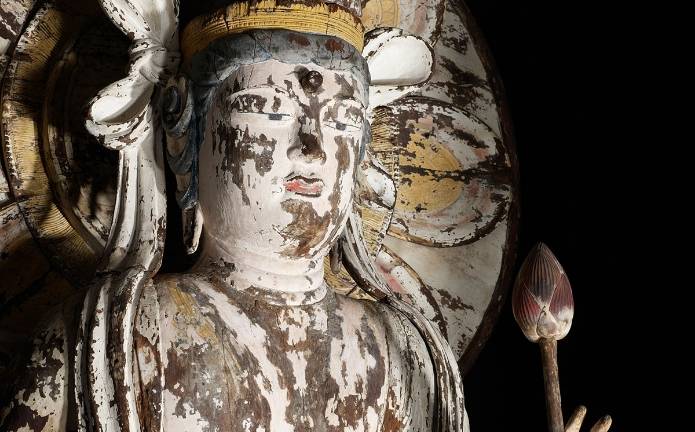
Basic Information
Futaiji
- Official Website
- http://www3.kcn.ne.jp/~futaiji/
- Hours
- 9:00 - 17:00 (Last Admission: 16:50)
- Entrance fee
-
Adults: 500 yen
High-School Students: 300 yen
Junior High-School Students: 300 yen
Elementary School Students: 200 yen
Note: During special openings:
Adults: 600 yen
High-School & Junior High-School Students: 400 yen
Elementary School Students: 300 yen
Note: On Narihira Memorial Day (May 28th):
Adults: 700 yen
High-School & Junior High-School Students: 500 yen
Elementary School Students: 300 yen
※ These fees apply depending on the time of visit, with special rates during specific times, such as Narihira Memorial Day.
- Access
- About a 3-minute walk from the Nara Kōtsu Bus Futaiji-guchi bus stop.
- Tel
- 080-8943-1201
Other temples in the Saki district
Temple
The original text and modern translation of the Man'yōshū on this site are quoted from Kodansha Bunko's Man'yōshū Complete Translation with Notes and Original Text (by Susumu Nakanishi).
